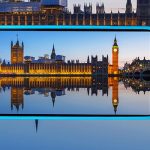Earlier this week at OpenUK’s State of Open Con, attendees got a glimpse of how an open government could boost efficiency and transparency.
A recent Channel 4 study showed that many young people feel disconnected from democracy and are leaning toward authoritarianism. In response, government speakers stressed the need for open data to create a clearer and more transparent system. Lord Nat Wei addressed this concern, noting young people’s frustration with the typical bureaucratic issues they face. He suggested they are drawn to leaders who promise to simplify their lives. “We need to rethink how we engage the public and shape policy,” he said.
One concrete example of open innovation is the Caddy AI large language model assistant. This tool arose from a partnership between i.AI and several Citizens Advice branches. Caddy leverages public resources from Gov.UK along with proprietary content from Citizens Advice. It’s built as a scalable framework that can integrate with various government systems and chat platforms. Technically, it uses open-source technologies to enhance its backend operations.
Emily Middleton, director general for digital centre design at the Department for Science, Innovation and Technology (DSIT), shared the benefits of a more interconnected government. She emphasized that a modern digital government should offer straightforward services. “People shouldn’t have to guess what benefits they qualify for or juggle different government requirements,” she stated. Yet, she acknowledged it remains challenging to share data responsibly across public sector agencies.
Procurement is one area where the UK government aims to increase transparency. Lindsay Maguire, deputy director of procurement reform at Government Commercial, described existing procurement processes as rigid, which complicates market activities. Open procurement enhances flexibility and transparency, benefiting public spending. She highlighted Ukraine as a successful example, noting that their increased transparency stemmed from open data and necessary legislation. Middleton pointed out that without legislation, it’s tough to encourage procurement teams to share their data.
Starting in February 2025, open data standards will become part of public sector procurement laws. Maguire’s team worked with the Open Contracting Partnership to create the Open Contracting Data standard. Gavin Hayman, their executive director, noted this approach helps the government understand its suppliers and outcomes better. “Planning is the key phase. It’s not just about buying; it’s about defining the needs upfront,” he explained.
Maguire mentioned there are over 1,000 different procurement frameworks in the UK, each covering various sectors and suppliers. Publishing data on these frameworks allows procurement officials to see similar purchases and compare prices. This openness not only encourages small businesses to participate but also supports economic growth, Maguire added. Additionally, it can lead to better commercial outcomes by helping procurement teams negotiate prices based on collective purchasing patterns. Open procurement could also reveal supply chain vulnerabilities and help detect possible corruption.
In his keynote, Wei suggested treating the government as an open system. This approach would allow for simulating government departments, enabling policymakers to experiment with different strategies. “What if we operate our government like a system?” he asked. This model would invite citizens and civil servants to contribute ideas and technology, leading to diverse perspectives in decision-making.
Although it may sound unconventional, treating government processes as a system mirrors how many businesses function. For the speakers at Open Con 25, the goal is clear: create an open system backed by open data.









